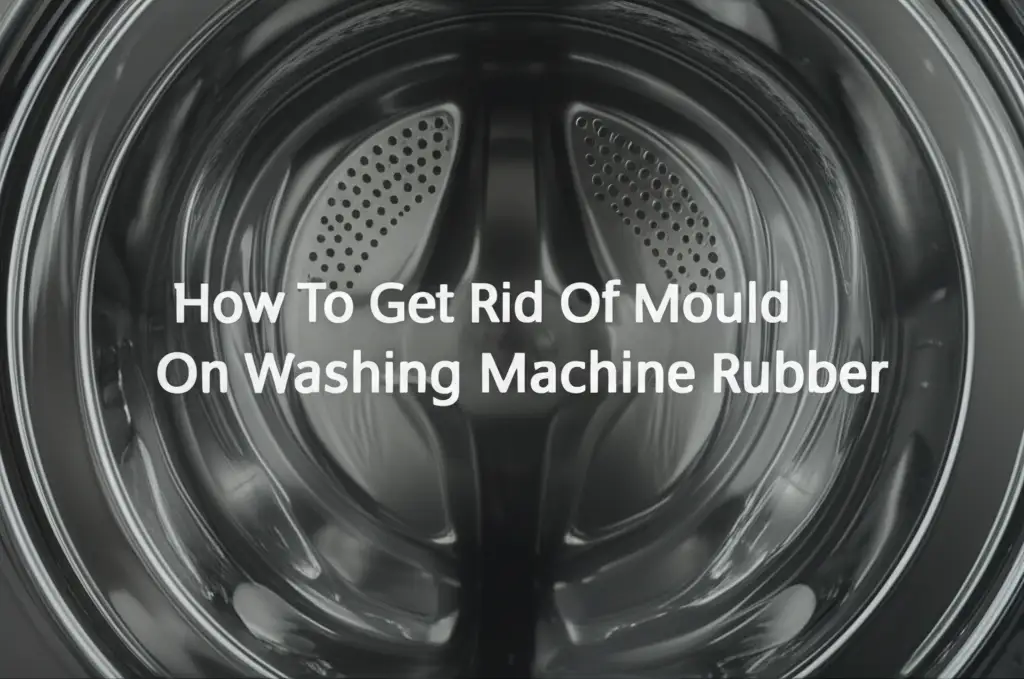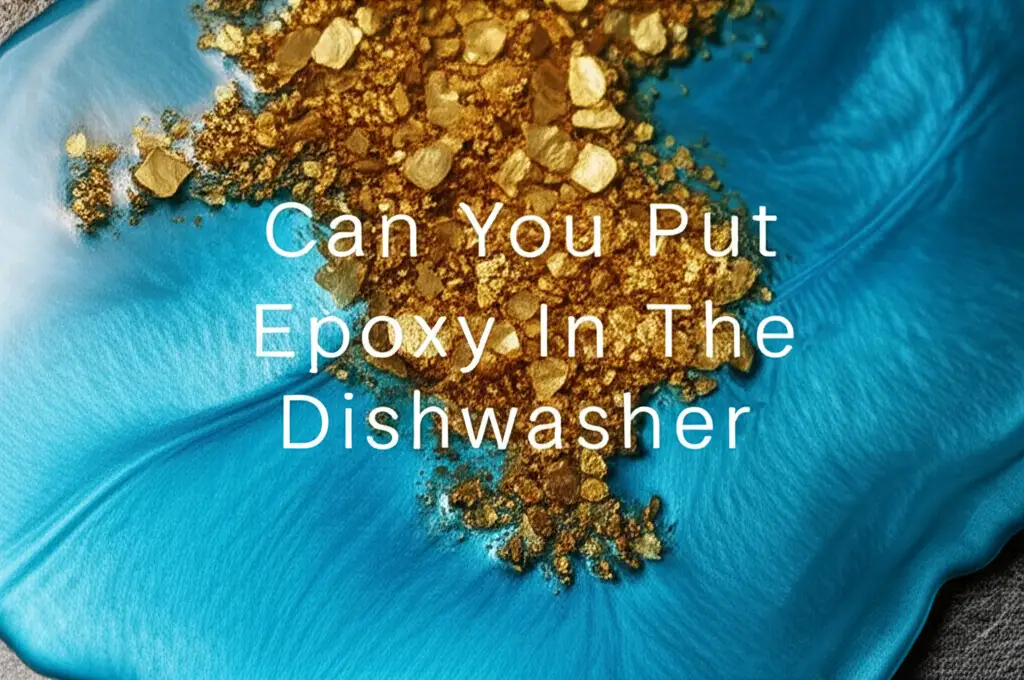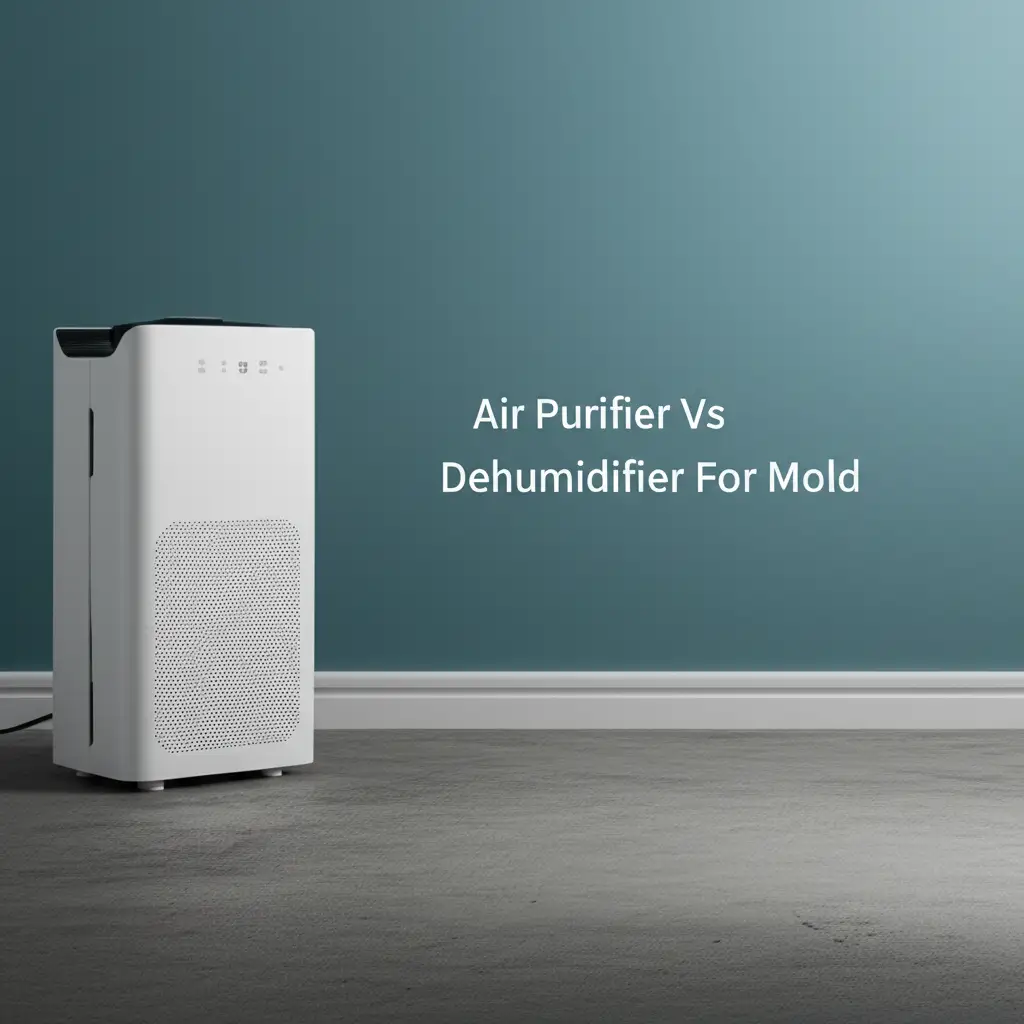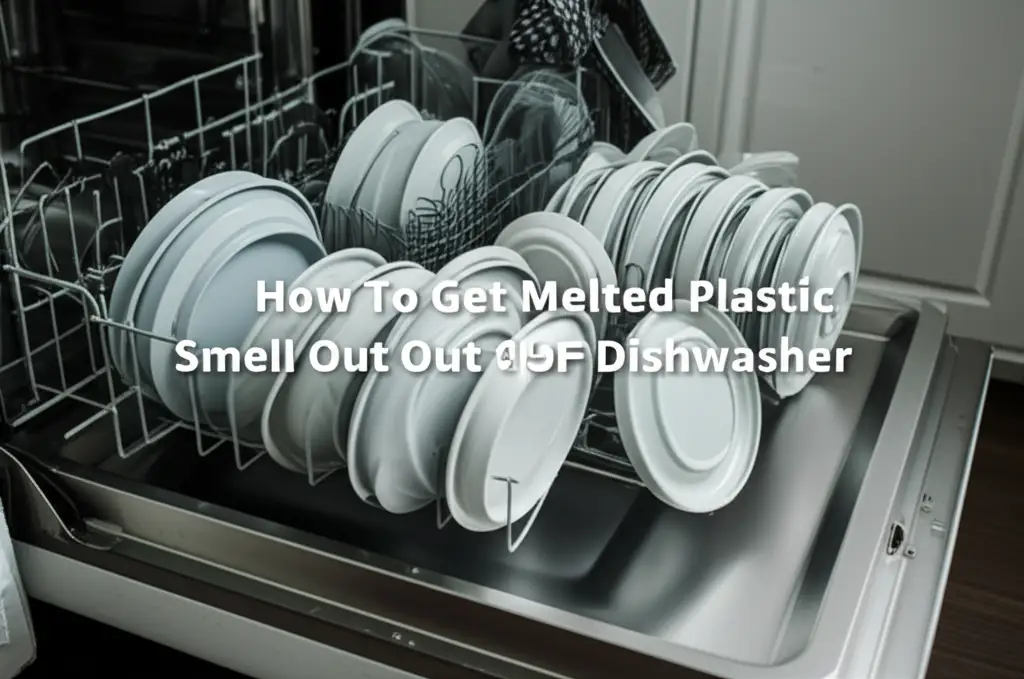· Elira Thomsen · Home Maintenance · 18 min read
How To Get Rid Of Mould On Washing Machine Rubber

Banish Mould from Your Washing Machine Rubber Seal
Have you noticed dark, slimy spots appearing on the rubber seal of your washing machine? This unpleasant sight is most likely mould. Mould on your washing machine rubber is a common problem, especially in front-loading models. It does not just look bad; it can also cause foul odors, transfer spores to your laundry, and even damage the appliance over time. Getting rid of this mould is essential for a clean home and fresh-smelling clothes. This article provides a comprehensive guide. We cover the causes of mould, effective cleaning methods using natural solutions and stronger agents, and crucial prevention strategies. You can keep your washing machine rubber clean and mould-free with the right approach.
Takeaway: Your Guide to a Mould-Free Washing Machine
- Regularly wipe down the rubber seal and leave the door ajar after each wash.
- Use a hot water and vinegar cycle for deep cleaning and deodorizing.
- Address mould spots promptly with baking soda paste or hydrogen peroxide.
- Consider a diluted bleach solution for tough, persistent mould, but use it carefully.
- Perform monthly maintenance washes to prevent mould from returning.
To get rid of mould on washing machine rubber, combine physical scrubbing with effective cleaning solutions. Use a vinegar-soaked cloth for light mould or a baking soda paste for tougher spots. For severe cases, a diluted bleach solution can be applied. Always ensure good ventilation and dry the area thoroughly after cleaning.
Understanding Washing Machine Rubber Mould
Mould growth on your washing machine rubber, often found on the door gasket of front-loading machines, is a common household issue. This dark, sometimes slimy substance thrives in specific conditions. Understanding these conditions helps you tackle the problem effectively. Mould is a type of fungus. It reproduces through tiny spores.
Why Mould Grows on Your Washing Machine Seal
Mould loves damp, dark, and warm environments. Your washing machine’s rubber seal provides exactly this. After a wash cycle, water often pools in the folds of the gasket. This residual moisture remains trapped if the door is closed. Detergent residues and fabric softener build-up also create a food source for mould. These factors combine to create an ideal breeding ground. The mould then multiplies quickly.
- Residual Moisture: Water collects in the folds of the rubber seal. It stays there after the wash cycle ends. This creates a constantly damp environment.
- Lack of Airflow: Closing the washing machine door traps moisture inside. This prevents the rubber from drying out completely. Mould needs stagnant air to grow.
- Detergent and Fabric Softener Residue: Soap scum and leftover fabric softener cling to the rubber. These residues provide nutrients for mould spores. The mould feeds on these organic materials.
- Warm Temperatures: Washing machines operate with warm water. This warmth also supports mould growth. The warmth accelerates the mould’s life cycle.
Mould can appear as black spots or a slimy film. It often gives off a musty smell. This smell can then transfer to your clothes. Mould poses problems beyond just appearance. It can cause health issues for sensitive individuals. It also degrades the rubber seal over time.
Impacts of Washing Machine Mould
Mould on your washing machine rubber has several negative impacts. First, it causes an unpleasant, musty odor. This smell can permeate your laundry, leaving clothes less than fresh. Second, mould spores can transfer to your clothes during the wash cycle. This can lead to skin irritation for some people. Third, the mould itself can damage the rubber seal. It can make the rubber brittle or cause it to crack. This can lead to leaks and expensive repairs.
Regular cleaning is vital. It keeps your machine working well. It also protects your health. Dealing with mould promptly maintains your washing machine’s efficiency. It also keeps your laundry clean and fresh. Ignoring mould only makes the problem worse. The mould spreads. The smell intensifies.
Essential Tools and Cleaning Agents for Mould Removal
Before you start cleaning, gather all necessary tools and cleaning agents. Having everything ready makes the process smoother and more efficient. Safety is also important. Always wear gloves to protect your hands from chemicals and mould spores. You may also want to wear eye protection or a mask, especially if the mould is severe.
Basic Cleaning Supplies You Will Need
You do not need many specialized tools. Standard household items work best. These items are often already in your home. They are also gentle on your washing machine’s rubber parts.
- Rubber Gloves: Essential for hand protection. They create a barrier against mould and cleaning solutions.
- Old Towels or Rags: You will need several. Use them for wiping, scrubbing, and drying. Old T-shirts work well too.
- Small Scrub Brush or Old Toothbrush: These are great for reaching into the creases of the rubber seal. They help scrub away stubborn mould spots.
- Spray Bottle: Useful for applying liquid cleaning solutions evenly.
- Bucket: For mixing cleaning solutions or holding water for rinsing.
Safe and Effective Cleaning Solutions
Several solutions can effectively remove mould. Some are natural and gentle. Others are stronger for tougher jobs. Choose the solution based on the severity of your mould problem.
Natural Cleaning Agents
Natural solutions are good for light to moderate mould. They are also safer for regular use. These options are less harsh on the rubber and the environment.
- White Vinegar: Distilled white vinegar is a fantastic natural mould killer. Its acidity breaks down mould. It also helps neutralize odors. You can use it undiluted or mix it with water.
- Baking Soda: Baking soda is a mild abrasive and deodorizer. It works well as a paste. This paste helps scrub away mould. It absorbs bad smells too.
- Hydrogen Peroxide (3%): This is a mild antiseptic. It kills mould spores. It is a good alternative to bleach. It is safer for colored surfaces. Hydrogen peroxide breaks down into water and oxygen.
Stronger Solutions for Tough Mould
Sometimes, mould is very stubborn. It might require stronger agents. Use these with caution. Ensure good ventilation when using them.
- Chlorine Bleach (Diluted): Bleach is a powerful disinfectant. It kills mould and lightens stains. Always dilute it with water. Never mix bleach with vinegar or other cleaners. This creates toxic fumes. A common ratio is 1 part bleach to 4 parts water.
- Commercial Washing Machine Cleaners: Many brands offer cleaners specifically for washing machines. These often contain mould-killing agents. Follow product instructions carefully. They can be helpful for deep cleaning cycles.
Preparing Your Machine for Cleaning
Before applying any cleaner, ensure your washing machine is empty. Remove any clothes. Disconnect the machine from power for safety. This prevents accidental starts. Open the door wide to access the rubber seal easily. You are now ready to tackle the mould.
Step-by-Step Guide to Clean Washing Machine Rubber
Cleaning the mould from your washing machine’s rubber seal requires a systematic approach. Follow these steps carefully to ensure thorough removal. Always work in a well-ventilated area. Protect your hands with rubber gloves.
Step 1: Initial Wipe Down
Begin by giving the rubber seal a preliminary wipe. Use a dry cloth or paper towel. This removes loose debris, hair, and surface grime. Pay attention to the folds and crevices of the gasket. This initial step helps you see the extent of the mould problem clearly. It also makes subsequent cleaning easier. Dispose of the dirty cloth immediately. You do not want to spread mould spores.
Step 2: Apply Your Chosen Cleaning Solution
Now, apply your cleaning solution directly to the mouldy areas. The choice of solution depends on the mould’s severity.
Using White Vinegar for Light Mould
For light mould or maintenance, white vinegar is excellent.
- Saturate a cloth: Dampen a clean cloth generously with undiluted white vinegar.
- Wipe the seal: Thoroughly wipe down all visible mould on the rubber gasket. Make sure to get into every crease and fold.
- Let it sit: Allow the vinegar to sit on the mould for at least 10-15 minutes. This gives the acid time to work on the mould spores.
Using Baking Soda Paste for Moderate Mould
Baking soda paste is good for tougher mould spots. It adds abrasive power.
- Make a paste: Mix about half a cup of baking soda with a few tablespoons of water. Create a thick paste.
- Apply the paste: Spread this paste directly onto the mouldy areas.
- Scrub gently: Use an old toothbrush or a small scrub brush. Gently scrub the paste into the mould. The baking soda helps lift the grime.
- Let it sit: Leave the paste on for 30 minutes to an hour. This allows the baking soda to absorb odors and break down mould.
Using Hydrogen Peroxide
Hydrogen peroxide (3%) is a great alternative if you prefer not to use vinegar or baking soda, or if you need a little more power.
- Spray or pour: Pour some 3% hydrogen peroxide into a spray bottle. Spray it directly onto the mouldy areas.
- Let it sit: Let it sit for 10-15 minutes. You might see some fizzing. This means it is working.
- Scrub: Use a brush to scrub the mould away.
Step 3: Scrubbing and Rinsing
After the cleaning solution has sat, it is time to scrub and rinse.
- Scrub again: Use your scrub brush or toothbrush. Work on the remaining mould. Apply a bit more cleaning solution if needed. Focus on areas where mould is stubbornly attached.
- Wipe clean: Wipe away the loosened mould and cleaning solution with a clean, damp cloth. Rinse the cloth often in a bucket of clean water. Ensure all residue is gone.
- Final rinse: Wipe the entire rubber seal with a fresh, clean, water-dampened cloth. This removes any lingering cleaning agent.
Step 4: Drying Thoroughly
This is a critical step for preventing future mould growth.
- Dry the seal: Use a dry, clean towel to thoroughly dry the entire rubber gasket. Make sure no moisture remains in the folds.
- Leave the door ajar: After cleaning, leave the washing machine door wide open. This allows air to circulate inside the drum and the rubber seal to dry completely. Do this for several hours or overnight.
By following these steps, you can effectively clean mould from your washing machine rubber. Regular cleaning and proper drying habits will keep it mould-free. For general rubber cleaning tips, consider looking at how to clean a rubber bath mat. The principles of cleaning and drying rubber are similar.
Natural and Eco-Friendly Mould Removal Solutions
Choosing natural and eco-friendly solutions benefits your health, your home, and the environment. These methods are generally safer than harsh chemicals. They are also very effective for managing mould on washing machine rubber. Many people prefer to avoid strong fumes and chemical residues.
The Power of White Vinegar
White distilled vinegar is a powerhouse for mould removal. It is inexpensive and readily available. The acetic acid in vinegar kills about 82% of mould species. It also deodorizes.
How to Use Vinegar for Mould on Washing Machine Rubber
- Prepare: Ensure your machine is empty. Put on rubber gloves.
- Application: Pour undiluted white vinegar onto a clean cloth or sponge. Wipe down the entire rubber seal. Pay special attention to hidden creases and folds. You can also pour some vinegar into a spray bottle. Spray the affected areas directly.
- Soak Time: Let the vinegar sit on the rubber for at least 30 minutes. For severe mould, let it sit for an hour or more. This allows the vinegar to penetrate and break down the mould.
- Scrub: Use an old toothbrush or a small scrub brush. Scrub away the loosened mould. The vinegar helps to dissolve the slimy residue.
- Rinse and Dry: Wipe the seal thoroughly with a clean, damp cloth. Then, use a dry towel to dry the rubber completely. Leave the washing machine door open to air it out.
Baking Soda for Mould Removal and Odor Control
Baking soda, or sodium bicarbonate, is a mild abrasive. It is also an excellent deodorizer. It helps scrub away mould. It absorbs the musty smell that mould often creates.
How to Use Baking Soda for Mould on Washing Machine Rubber
- Make a Paste: Mix half a cup of baking soda with a few tablespoons of water. Stir until you have a thick paste. The paste should be spreadable but not too runny.
- Apply the Paste: Apply the baking soda paste directly onto the mouldy areas. Press it into the crevices of the rubber seal.
- Let it Sit: Allow the paste to sit for 15-30 minutes. For tough mould, leave it on for an hour.
- Scrub and Wipe: Use a damp scrub brush or a damp cloth to scrub the paste into the mould. The abrasive nature of baking soda helps lift the mould away. Wipe away the paste and mould residue with a clean, damp cloth.
- Dry: Dry the rubber seal completely with a clean towel. Keep the door open for air circulation.
Hydrogen Peroxide as a Bleach Alternative
Hydrogen peroxide (3% concentration) is a safe and effective disinfectant. It kills mould, bacteria, and viruses. It breaks down into water and oxygen. This makes it environmentally friendly. It does not produce harsh fumes.
How to Use Hydrogen Peroxide for Mould
- Preparation: Pour 3% hydrogen peroxide into a spray bottle.
- Spray: Spray the mouldy areas of the rubber seal generously.
- Soak Time: Let the hydrogen peroxide sit for at least 10 minutes. You may see some bubbling. This indicates it is working.
- Scrub: Scrub the area with a brush or cloth to remove the loosened mould.
- Wipe Clean: Wipe the seal thoroughly with a clean, damp cloth.
- Dry: Dry the rubber seal completely. Leave the door open for airflow.
These natural methods are excellent choices for routine cleaning and for tackling mild to moderate mould issues. They are gentle on your machine and safe for your home.
When to Use Stronger Solutions (Bleach or Commercial Cleaners)
Sometimes, mould on your washing machine rubber can be extensive or deeply embedded. In these cases, natural solutions might not be enough. Stronger cleaners like diluted bleach or commercial mould removers become necessary. Using these solutions requires extra care and adherence to safety guidelines.
Using Chlorine Bleach Safely
Chlorine bleach is a powerful disinfectant. It kills mould spores and helps remove stains. However, it is a corrosive chemical. It can damage certain materials and produce harmful fumes if not used correctly.
Precautions for Using Bleach:
- Ventilation is Key: Always ensure the area is very well-ventilated. Open windows and turn on exhaust fans.
- Wear Protective Gear: Use rubber gloves to protect your hands. Eye protection is also wise. Consider a mask to avoid inhaling fumes.
- Dilute Properly: Never use undiluted bleach. A common dilution ratio is 1 part bleach to 4 parts water. For example, mix 1/4 cup of bleach with 1 cup of water.
- Never Mix with Other Cleaners: Crucially, never mix bleach with vinegar, ammonia, or other household cleaners. This creates dangerous, toxic gases.
- Test a Small Area: If you are worried about discoloration, test the diluted bleach on an inconspicuous part of the rubber seal first.
How to Use Diluted Bleach for Tough Mould:
- Prepare the Solution: Mix your diluted bleach solution in a bucket or spray bottle.
- Apply: Dip a clean cloth into the diluted bleach solution. Wring out excess liquid. Carefully wipe the mouldy areas of the rubber seal. For hard-to-reach spots, an old toothbrush dipped in the solution can help. Alternatively, you can spray the solution directly onto the mould.
- Soak Time: Allow the bleach solution to sit on the mould for 5-10 minutes. Do not leave it on for too long, as it can be harsh on the rubber.
- Scrub: Gently scrub the affected areas with a brush or cloth.
- Rinse Thoroughly: This step is vital. Use a clean cloth dampened with plain water. Wipe down the entire rubber seal multiple times to remove all bleach residue. You want to ensure no bleach remains on the rubber. Residual bleach can damage the rubber over time.
- Run a Rinse Cycle: After manually cleaning, run an empty hot water rinse cycle (without detergent) in your washing machine. This helps flush out any lingering bleach inside the drum or hoses.
- Dry: Dry the rubber seal completely with a clean towel. Leave the door open for several hours.
Using Commercial Mould Removers
Many specialized commercial washing machine cleaners are available. These products are often formulated to tackle mould and mildew. They can be very effective.
Tips for Using Commercial Cleaners:
- Read Instructions: Always read and follow the manufacturer’s instructions exactly. This ensures safe and effective use.
- Specific Formulas: Some cleaners are designed for specific washing machine types, like HE (High-Efficiency) models. For example, cleaning an LG HE washing machine often involves specific products or cycles mentioned in the manual.
- Ingredients: Look for cleaners that specify mould and mildew removal. They may contain ingredients like oxygen bleach (percarbonate), enzymes, or other antimicrobial agents.
- Application: Some cleaners are liquids to pour into the detergent dispenser. Others are tablets to place directly in the drum.
Commercial cleaners can be a convenient option. They offer a strong punch against stubborn mould. Always prioritize safety and proper ventilation when using any strong cleaning agent. After using these powerful cleaners, always perform a thorough rinse. Then, completely dry the washing machine rubber. This ensures no harmful residues are left behind.
Preventing Mould Growth on Your Washing Machine Rubber
Once you have cleaned the mould from your washing machine rubber, the next crucial step is prevention. Preventing mould is much easier than removing it. A few simple habits can make a huge difference. These practices ensure your washing machine remains fresh, clean, and free of mould.
Key Preventative Measures
The primary cause of mould is moisture. Therefore, keeping the rubber seal dry is your best defense. Incorporate these habits into your laundry routine.
- Wipe Down the Rubber After Each Use: After every wash cycle, take a clean, dry cloth. Thoroughly wipe down the entire rubber gasket. Pay attention to the folds and crevices. This removes trapped water and detergent residue. It only takes a minute but is extremely effective.
- Leave the Washing Machine Door Ajar: This is perhaps the most important tip. After finishing your laundry, leave the washing machine door open. Even a small crack allows air to circulate inside the drum. This helps the rubber seal and the drum dry out completely. Do this immediately after emptying the machine.
- Remove Laundry Promptly: Do not leave wet clothes sitting in the washing machine. Remove them as soon as the cycle finishes. Damp clothes create a humid environment inside the machine. This promotes mould growth.
- Use Proper Detergent Amounts: Using too much detergent creates excessive suds. These suds can leave behind a soapy residue. This residue accumulates in the rubber seal. It becomes a food source for mould. Follow the detergent manufacturer’s recommendations. For instance, high-efficiency (HE) washing machines require specific HE detergents in smaller amounts.
- Choose the Right Detergent: Liquid detergents sometimes leave more residue than powder detergents. Consider using powder if mould is a persistent problem. Also, avoid using too much fabric softener. Fabric softener can also leave a film.
Regular Maintenance Washes
Periodic deep cleaning of your washing machine helps prevent mould and keeps it running efficiently. These maintenance washes target mould spores and detergent build-up throughout the machine.
- Hot Water Maintenance Cycle: Run an empty hot water wash cycle once a month. Add two cups of white vinegar to the detergent dispenser or directly into the drum. Alternatively, you can use half a cup of baking soda directly in the drum. Some machines have a “Tub Clean” or “Self Clean” cycle. Use this feature if your machine has one. This hot wash helps flush out mould spores, detergent residue, and unpleasant odors from inside the machine. This is a good general practice for DIY washing machine maintenance.
- Clean the Detergent Dispenser: The detergent dispenser can also accumulate mould and mildew. Remove it if possible and clean it thoroughly under warm water. Use an old toothbrush to scrub away any residue. If it is not removable, wipe it down regularly.
- Check the Drain Pump Filter: Many front-loading machines have a drain pump filter. This filter can trap lint, coins, and other debris. This debris can contribute to odors and provide a breeding ground for mould. Check your machine’s manual for its location. Clean it out every few months. Be prepared for some residual water when opening it.
Implementing these preventative measures will significantly reduce the chances of mould returning to your washing machine rubber. Consistent effort will ensure a clean, fresh-smelling machine and laundry. This is vital for your appliance’s longevity and your home’s hygiene.
Long-Term Maintenance for a Mould-Free Washing Machine
Keeping your washing machine mould-free is an ongoing effort. It is not just about cleaning the rubber once. It involves establishing a regular maintenance routine. This routine helps prevent mould from ever taking hold. It also addresses other parts of the machine that can contribute to bad odors or mould growth.
Establish a Cleaning Routine
Consistency is key for a mould-free washing machine. Create a simple schedule that you can stick to.
- Daily Wipe-Down: Make it a habit to wipe down the rubber seal and the door after every single wash cycle. This removes immediate moisture and prevents water from stagnating. It takes less than a minute.
- Weekly Check: Once a week, quickly inspect the entire rubber gasket for any early signs of mould. Catching mould early makes it easier to remove. Use a vinegar-dampened cloth for a quick wipe.
- Monthly Deep Clean: Perform a monthly maintenance wash. Use hot water and either vinegar or a commercial washing machine cleaner. This deep clean flushes out the entire system. It helps prevent build-up in hoses and the drum. For example, if you have an LG HE washing machine, you might follow specific instructions for its cleaning an LG HE washing machine cycle.
- Quarterly Filter Clean: If your machine has a drain pump filter, clean it every three months. This prevents lint and debris from accumulating, which can cause clogs and odors.
Check Other Areas Prone to Mould and Buildup
Mould often hides in other parts of the washing machine. Addressing these areas supports a completely clean appliance.
- Detergent Dispenser: Residue from detergents and fabric softeners





